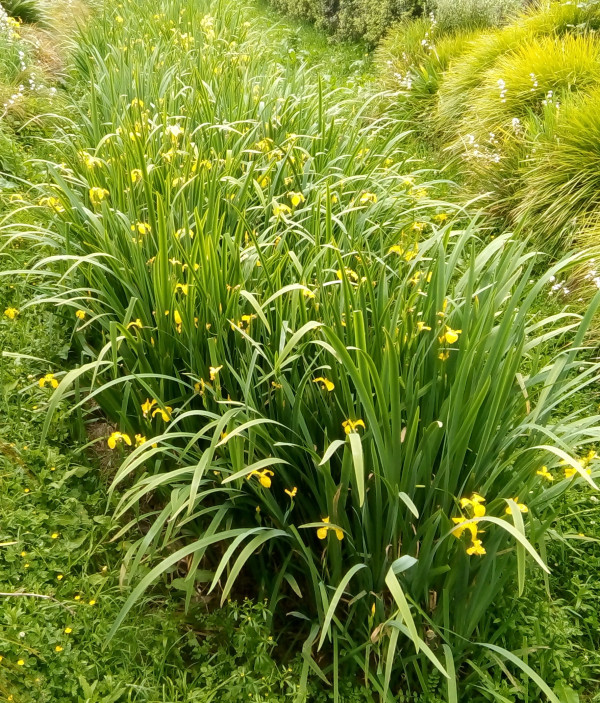You’ll see a lot of things bright and beautiful floating on the surface of our waterways in the coming months. But there’s one pest plant that we don’t want to float too far from your local wetland.
Yellow flag iris (Iris pseudacorus) is an aquatic perennial that grows in swampy ground and along the margins of waterways. It is listed as a ‘Sustained Control’ species in the Tasman-Nelson Regional Pest Management Plan, and landowners are required to control and prevent spread to other areas.
It typically forms dense stands that impede water flow and can outcompete native riparian and wetland species. It can also invade and displace low-lying pasture and is toxic to livestock.
Many wetland areas with yellow flag iris were intentionally planted. Its seed is large and is well adapted for distribution in wet areas, as it can float on the water’s surface to new localities.
Yellow flag iris produces large, bright yellow flowers between October and December that are around 12cm wide.
After flowering, large green seed pods appear, containing flattened disc-like seeds. These are produced from December through to March.
Seeds that settle on stream banks and in shallow wetland margins take root and establish monoculture thickets of plants.
Plants growing over water can form rafts of floating rhizomes.
Control is best done after a period of dry weather, with the careful use of glyphosate herbicide spray.
For more information and advice, please contact our Biosecurity Team on 03 543 8400.


